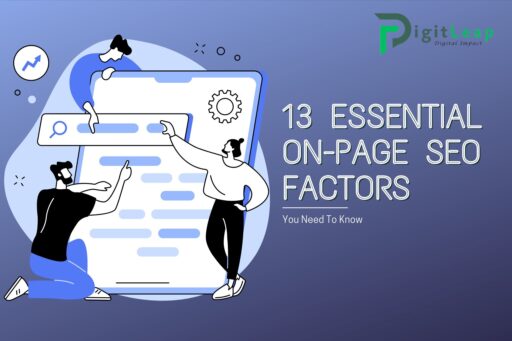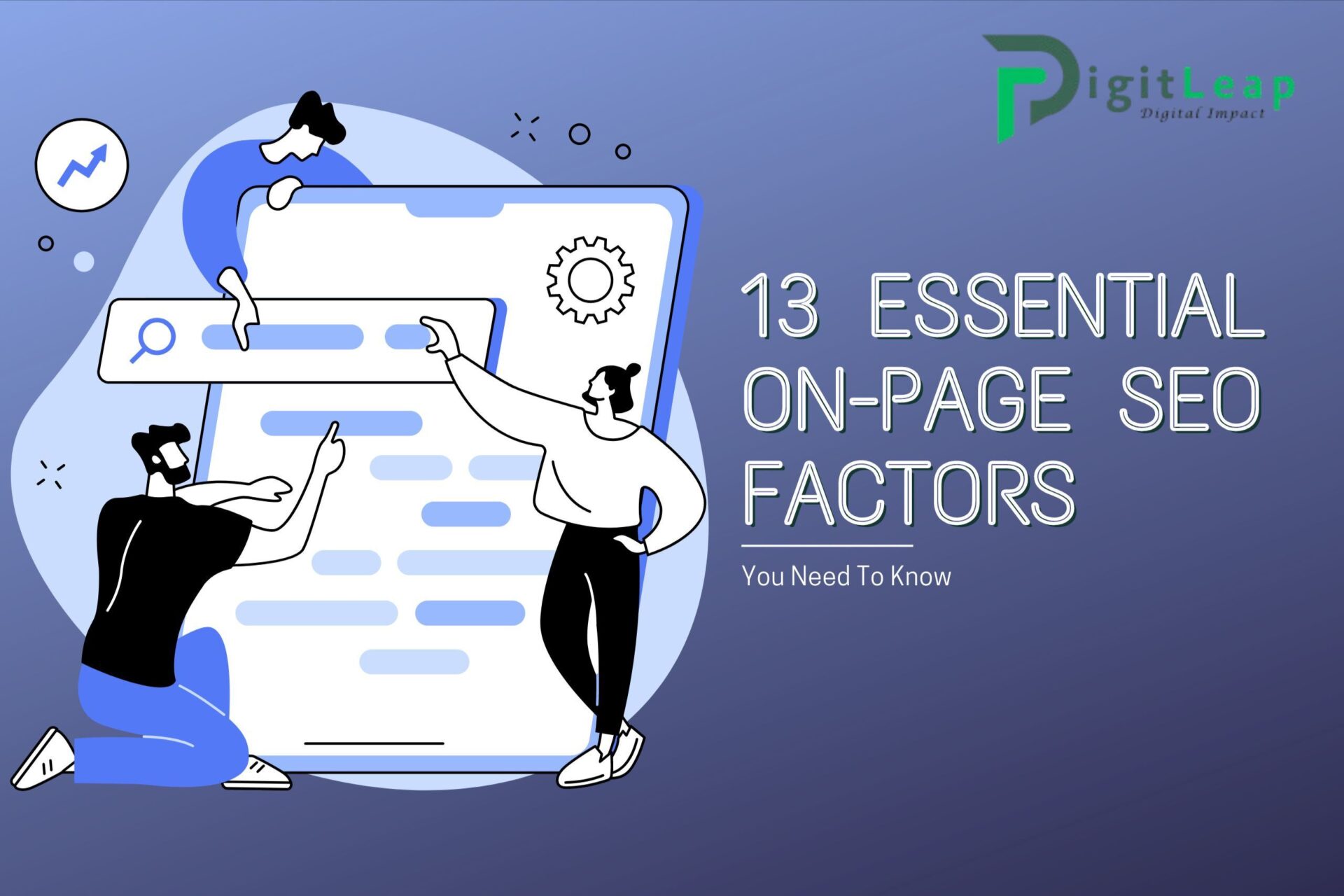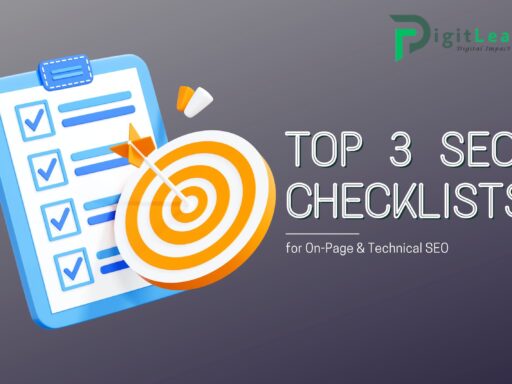13 Essential On-Page SEO Factors You Need To Know
When it comes to boosting your website’s visibility in search engines like Google, on-page SEO is crucial. Unlike off-page SEO, which focuses on external factors like backlinks, on-page SEO is all about optimizing the elements on your actual website. By fine-tuning these factors, you make it easier for search engines to understand your content and rank it accordingly. Let’s dive into the 13 essential on-page SEO factors you need to know.
1. Title Tags
Title tags are one of the most important on-page SEO elements. This is the clickable headline that appears on search engine results pages (SERPs). It should be concise (around 60 characters), include your target keyword, and be compelling enough to encourage users to click through to your site.
For example, if your keyword is “best SEO practices,” a good title tag might be:
- “Best SEO Practices: A Complete Guide to Boost Your Rankings”
2. Meta Descriptions
A meta description is the snippet of text that appears below the title tag on search results. While it doesn’t directly affect rankings, a well-written meta description can improve your click-through rate (CTR). It should briefly describe the content of the page, include the target keyword, and encourage the user to take action, such as “Learn more” or “Discover now.”
For instance:
- “Learn the top on-page SEO factors that can help your website rank higher in Google. Discover how to optimize your content for better visibility.”
3. Headings (H1, H2, H3)
Headings help organize your content and make it easier for users and search engines to navigate. The H1 tag should be the main title of the page and contain your primary keyword. H2 and H3 tags are used for subheadings, which break up the content into digestible sections and make it easier to read.
For example, if your H1 is “Top 10 SEO Tips,” your H2 could be “Optimize Your Title Tags,” and your H3 could be “Use Keywords Wisely in Titles.”
4. URL Structure
Your URL structure should be clean, descriptive, and include your target keyword. A clear URL helps search engines and users understand what the page is about before they even click on it. Avoid long, complicated URLs with random numbers or characters.
For example, instead of:
You should aim for something like:
5. Keyword Optimization
Keyword optimization is still a critical on-page SEO factor. You need to use relevant keywords naturally throughout your content. Place them in key areas like the title tag, meta description, headings, and within the first 100 words of your article. However, avoid keyword stuffing, which can harm your rankings.
A good strategy is to focus on semantic keywords—related terms that support your primary keyword. For example, if your keyword is “SEO tips,” related keywords might include “on-page SEO,” “ranking strategies,” or “improve search visibility.”
6. Content Quality
Google prioritizes content that is valuable, well-written, and comprehensive. Your content should answer the searcher’s query and provide real value. The higher the quality of your content, the more likely it is to attract backlinks, shares, and engagement, all of which are positive signals to search engines.
Make sure your content is original, in-depth, and well-researched. It should also be free of grammatical errors and easy to read.
7. Internal Linking
Internal links are hyperlinks that point to other pages on your website. They help users navigate your site and provide context for search engines, helping them understand the structure of your site. Plus, they help distribute “link juice,” which is the SEO value passed from one page to another.
For example, if you’re writing an article about “SEO strategies,” you might include an internal link to another post about “Keyword research.”
8. External Linking
External links, or outbound links, are links to other authoritative websites. These links can help establish your content as credible and well-researched. By linking to reputable sources, you signal to both users and search engines that your content is trustworthy.
For example, if you’re writing about SEO trends, you could link to a credible source like Google’s Webmaster Blog or a well-known SEO expert.
9. Mobile-Friendliness
With more people browsing the web on mobile devices, mobile-friendliness is a key factor for both user experience and SEO. Google uses mobile-first indexing, which means it predominantly uses the mobile version of your site for indexing and ranking. Ensure your website is responsive and works well on all screen sizes.
Test your site on various mobile devices and ensure it’s easy to navigate, with clickable buttons and readable text.
10. Page Loading Speed
Page speed is a crucial ranking factor. A slow website can frustrate users, causing them to leave before they’ve even had a chance to read your content. This increases your bounce rate and can negatively impact your SEO.
To improve page speed, consider compressing images, using a content delivery network (CDN), and reducing the number of scripts running on your pages. You can use tools like Google PageSpeed Insights to identify areas for improvement.
11. Image Optimization
Images are an important part of web content, but they also need to be optimized for SEO. This includes using descriptive file names, adding alt text that describes the image, and compressing images to reduce file size.
Alt text helps search engines understand what the image is about and can improve your visibility in image search results. It also makes your site more accessible to users with visual impairments who rely on screen readers.
For example, instead of naming an image file “IMG1234.jpg,” use something descriptive like “seo-checklist.jpg.”
12. User Engagement Metrics
User engagement signals, like bounce rate, time on page, and click-through rate, can indirectly affect SEO. If users are engaging with your content, it signals to Google that your page is providing value.
Encourage user engagement by making your content engaging, easy to read, and providing clear calls-to-action (CTAs). Use images, videos, bullet points, and short paragraphs to break up text and make your content more scannable.
13. Structured Data (Schema Markup)
Structured data, also known as schema markup, helps search engines understand your content more clearly. This code provides additional context about the information on your website, which can result in rich snippets (like star ratings or product details) appearing in search results.
Adding structured data can enhance your appearance in search results, making your listing more appealing and potentially increasing your click-through rate.
For example, if you’re running an online store, you can use schema markup to display product details like price, availability, and reviews directly on the search results page.
Conclusion
Optimizing your website for on-page SEO is essential for improving your rankings, driving traffic, and creating a positive user experience. By focusing on these 13 factors, you can ensure that your website is optimized for search engines and delivers valuable content to your users. From title tags and keyword optimization to mobile-friendliness and page speed, each factor plays a role in building a successful SEO strategy.
By implementing these best practices, you can increase your visibility on search engines and ensure your content resonates with both users and search algorithms.






